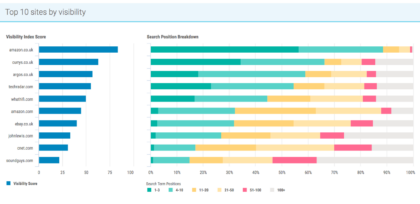Seeing the bigger picture: Image optimisation in 2020 | SEO in the Shed Live
24 Mar 2020|2 MIN READ
As a Google Squared lecturer, Clark Boyd has an extensive background in digital, both in the field and teaching. It’s safe to say he really knows what he’s talking about when it comes to SEO.
After assuring us that ‘the bigger picture’ is the only image pun included in his talk, Clark launches into the growing importance of image optimisation on Google.
Why do images matter for search marketing?
The classic blue links look a lot less appetising to the modern user - Google knows this. Google images are also becoming much smarter, with trend based image categories, but how can you optimise for these?
Even for industries that aren’t particularly visual - i.e. Insurance - whilst image searches are unlikely to instantly result in an insurance purchase, they can act as an awareness or engagement opportunity along a customer's path to conversion, and are therefore worthy of optimisation.
With this in mind - intent really matters! How a brand organises their images should always keep in mind the intent of the searcher - are they open to ideas? Looking for something specific? How can you guide your audience to the right content using your visuals?
What does this mean for SEO’s?
Google has stated ‘We now prioritise where the image is central to the page, and higher up on the page’. This is a completely different approach for most SEOs, not just thinking about a keyword strategy but also image placement and organisation.
Clark also mentions that encouraging this kind of image usage allows Google to take and use your images to enrich its image intelligence too!
You may be performing well in the SERP for a keyword, but if image results are shown above your blue link and your image doesn’t rank there, you stand to lose out. This is why it's so important for SEO’s to label images correctly.
You can use computer vision technology to see how a machine interprets your images - Google uses this technology and your alt text in tandem to understand the image. If these two identifiers don’t add up, Google is unlikely to rank your image.
How can you find the image opportunity in your market?
You can use tools such as Pi Platform SERP Features tools, which highlight which SERP Features that are returning on Google for specific keywords. This enables you to identify when and where images are served - is it for informational, navigational or transactional search queries? Is it before the blue links or after? With this insight, you can find the answers to these kinds of questions, and subsequently prioritise your image optimisation.
Key takeaways:
- Images can allow SEO to take a more central role in the key function of marketing; encouraging our audience to take action.
- Image organisation is crucial. Tag trends, product categories and styles.
- Incorporate images into the page template, for keyword categories that trigger image results.
- Use technology to understand how a machine ‘sees’ your images.
Never miss a post
Join our mailing list and have our SEO news delivered straight to your inbox.




